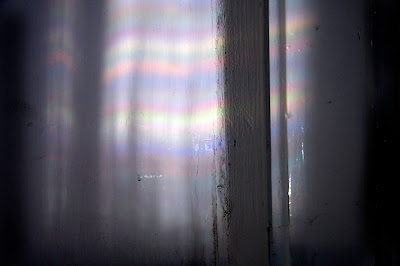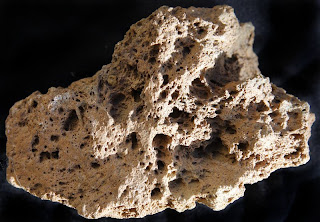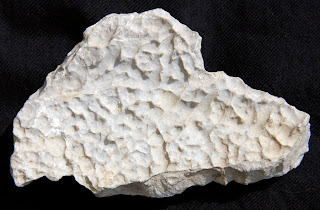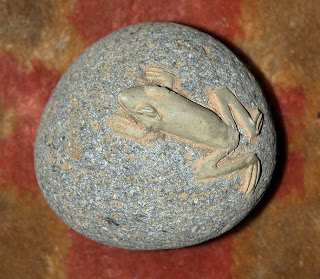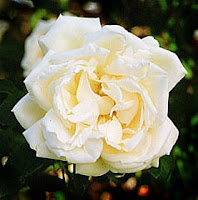
I had dozed for a while on the sofa yesterday having re-read some Selborne. I knew this sleep was a bad idea, and sure enough, there was a big gap last night which I filled by plodding towards the end of a novel set in the Black Death. On the way back to sleep, wistfully (maybe) as a reaction against the unseasonal snow over the rest of England, I recalled a childhood summer.
I think that I was eight. I was staying over at my grandmother’s. It was a very warm summer's evening and I was still awake, irritated. There was too much light, too much life pouring in through my windows. I simply could not get to sleep while everyone else was out and about. An aunt had come to see why I was still awake. I clearly remember asking her, "why can't I remember falling asleep?"
"Because you haven't been to sleep yet."
"No, not just tonight, why can I never remember falling asleep?"
"Well, it's because when you are asleep, you are asleep. You can only remember some of your dreams from your sleep, and maybe then for only a short while after you have woken up."
Aunt Hilda commanded both awe and fear in me – she was a Spiritualist. She spoke with the dead. My child-logic informed me that of all people, she must have an answer to this kind of question. Though I was unsure why I had come to this conclusion. "No, why can't I remember the last moment before I go to sleep? The moment in the middle of being awake and being asleep"
She frowned and smiled. "It's not that simple. It's not like the difference between morning and afternoon - midday by the clock. No, it's more like the difference between daytime and night time - you can watch that happen, but it is impossible to say exactly when night time begins, even though it's just a matter of light and dark. And Ah! If you remember that moment you are trying to find between being awake and being asleep, you may never wake out of it, or so they say."
I knew that she was trying to calm me with her commonsense-logic, nearly as much as I was really annoyed by the things that 'they' do or 'they' say. Yet this simple statement shocked me to the quick. Why should remembering a single moment do this? How could this be? Wasn't it dangerous to leave moments like these lying around for children to find? But, how could I remember something if I never woke up, if the future was held back in the present?
"How, why?" I pursued.
"Well, maybe it's because you would be neither awake nor asleep. We should be one or the other - we can't be both at the same time can we? But being neither may be very serious, a long way away from the rest of us, maybe even in another world, another time, another us." She was wise but didn't really have a solution that I wanted to hear. And I was worried that 'another us' meant her spirit world. I read myself to sleep with my comforter, St Exupéry, maybe something like:
'Then you don't remember. This is not the exact spot.'Another voice must have answered him, for he replied to it:'Yes, yes! It is the right day, but this is not the right place.'
(from
The Little Prince, Antoine de St Exupéry, 1943)

I do not believe that we ever spoke of it again, though I continued to try to map my nightly falling without any success. It was almost as if the soft seduction of falling proscribed its memory, that observation somehow interfered with the actual falling; that the falling knew that it was being observed; that having passed through, the gate to consciousness was firmly closed behind you, and though you could still catch sight of all that lay there, it was impossible to recall any of these experiences. Perhaps I was also afraid of the consequences of success.
This is a photograph of my aunt Hilda, the spiritualist. And guessing by the clothes, it was probably taken in the late 20s maybe early 30s. Despite appearances, she is not Miriam Margolyes.
 Tuesday 29th April: It’s raining in Whitstable, Kent. The Essex coast of the Thames estuary has disappeared, but these groynes on the flint shingle beach are still doing their bit to protect the up-coast Seasalter native oyster fishery from the effects of longshore drift. Groyne is one of those mysterious and slightly amusing words that doesn’t make much sense when you are standing next to an uncompromising wooden hulk. As a child I'd regarded groyne as a transitive verb meaning "to scrape children." On the other hand, longshore drift is simply sand or shingle shifting along a the coastline with prevailing wind or wave action – which can lead to more serious erosion or silting-up, or some spectacular natural creations
Tuesday 29th April: It’s raining in Whitstable, Kent. The Essex coast of the Thames estuary has disappeared, but these groynes on the flint shingle beach are still doing their bit to protect the up-coast Seasalter native oyster fishery from the effects of longshore drift. Groyne is one of those mysterious and slightly amusing words that doesn’t make much sense when you are standing next to an uncompromising wooden hulk. As a child I'd regarded groyne as a transitive verb meaning "to scrape children." On the other hand, longshore drift is simply sand or shingle shifting along a the coastline with prevailing wind or wave action – which can lead to more serious erosion or silting-up, or some spectacular natural creations





